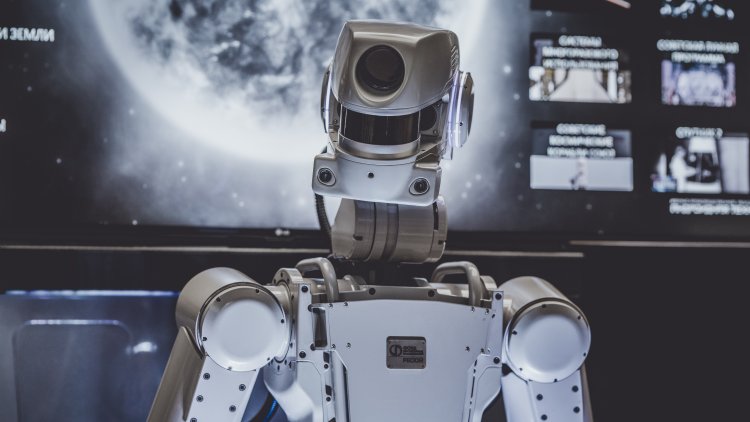Manned cosmonautics is moving forward. And now robots and artificial intelligence are coming to the aid of astronauts. Read about the robotization of flights to the stars in our material.
An important mission
“Both robotics and artificial intelligence are further development of those processes that were started 60 years ago. Today, many people are talking and developing systems for refueling or reconfiguring spacecraft,” Nikolay Testoyedov, Corresponding Member of the Russian Academy of Sciences, told our portal.
The foundations of manned cosmonautics, laid by great scientists in the last century, are being developed by Russian science. One of the important directions is the robotization of space flights. What is it for? It’s simple: psychophysical limitations do not allow a person to cope with some tasks in space. And then the smart devices and automatic systems come to the rescue.
One of the first examples of the use of robotics was manipulators for taking soil samples by Soviet and American spacecraft on the surface of the Moon, Mars, and Venus.
It is important to understand that there are space robots, space robotic complexes, and space robotic systems.
Space robots are commonly referred to as technical devices that operate in outer space. The developers have made them so that they can perform tasks due to automatic reproduction (imitation) of sensory, control, motor, and communication functions of a person.
The space robotics complex is a larger system. These are several functionally interconnected elements: a space robot (robots), ground-based technical installations and structures. All of them help in the maintenance, transportation, storage, bringing and maintaining in readiness for launching into orbit a space robot (robots), as well as controlling it (them) in flight.
Finally, the space robotic system. We are talking about the unification of several space robotic complexes. They can coherently interact with each other to achieve the same goal.
What does a robot consist of?
A space robot is a complex system consisting of the following components:
- an executive system;
- an information (sensory) system;
- a control system;
- a communication system;
- support systems.
A person in the external environment performs two types of movements – manipulation and locomotion.
In the first case, we mean the movement of the hands when performing any work, and in the second – the movement of the whole body. That is why the robot’s executive system includes manipulation and locomotion.
The manipulation system basis consists of mechanical manipulators – spatial mechanisms in the form of kinematic chains of links. They form kinematic pairs with angular or translational relative motion and a system of drives, usually separate for each degree of mobility.
Вторая система, локомоционная, также, как и манипуляционная, образует систему передвижения робота. Базовым элементом систем передвижения выступают движители. И в космических роботах их роль играют различного типа реактивные двигатели.
30 years in orbit
One of the examples of successful solution of orbital tasks using space robotics is the Canadarm manipulator system. It shows the level of development of space robotics in the 1980s – 1990s. The manipulator helped solve problems quickly and efficiently; therefore, it has been operated for 30 years. Canadarm was successfully tested for the first time in November 1981, during the second Space Shuttle mission (STS-2). And the last flight was in July 2011 (STS-135 mission).
Canadarm moved loads from the cargo hold to a certain point in the working area with the required orientation, for example, when launching a satellite into orbit. In addition, it provided support to astronauts working in the open space. One of the robot’s missions was to move them. Quite often, the joint work of astronauts is used, one of whom is fixed on the manipulator, and the second can move freely in the work area.
ТCanadarm’s technical characteristics were as follows: about 15 m long, link diameter a little more than 30 cm. And the mass slightly over 400 kg.
FEDOR and ARTEM
FEDOR and ARTEM FEDOR (Final Experimental Demonstration Object Research) is an anthropomorphic rescue robot.
Its creation began in 2014 by the Android Technics Scientific Production Association and the Russian Foundation for Advanced Research Projects commissioned by the EMERCOM of Russia.
Fedor has a voice control system and special sensors. It has a head, a pair of legs, and hands with five fingers. The robot height is slightly more than 180 centimeters, and the weight depends on the use of modules and varies from 105 to 160 kilograms.
Its main task is to help a person, so the anthropomorphic robot can replace a person in difficult and dangerous space situations. Fedor visited the International Space Station (ISS), where it participated in several experiments under the Tester program. By the way, it got a receiver – ARTEM (Automatic Research and Testing Machine). The robot, unlike its predecessor, is partially able to control the Orel reusable spacecraft and its tests will begin in 2023.
Photo on the page and on the homepage: Arseny Togulev / Photo bank Unsplash






















